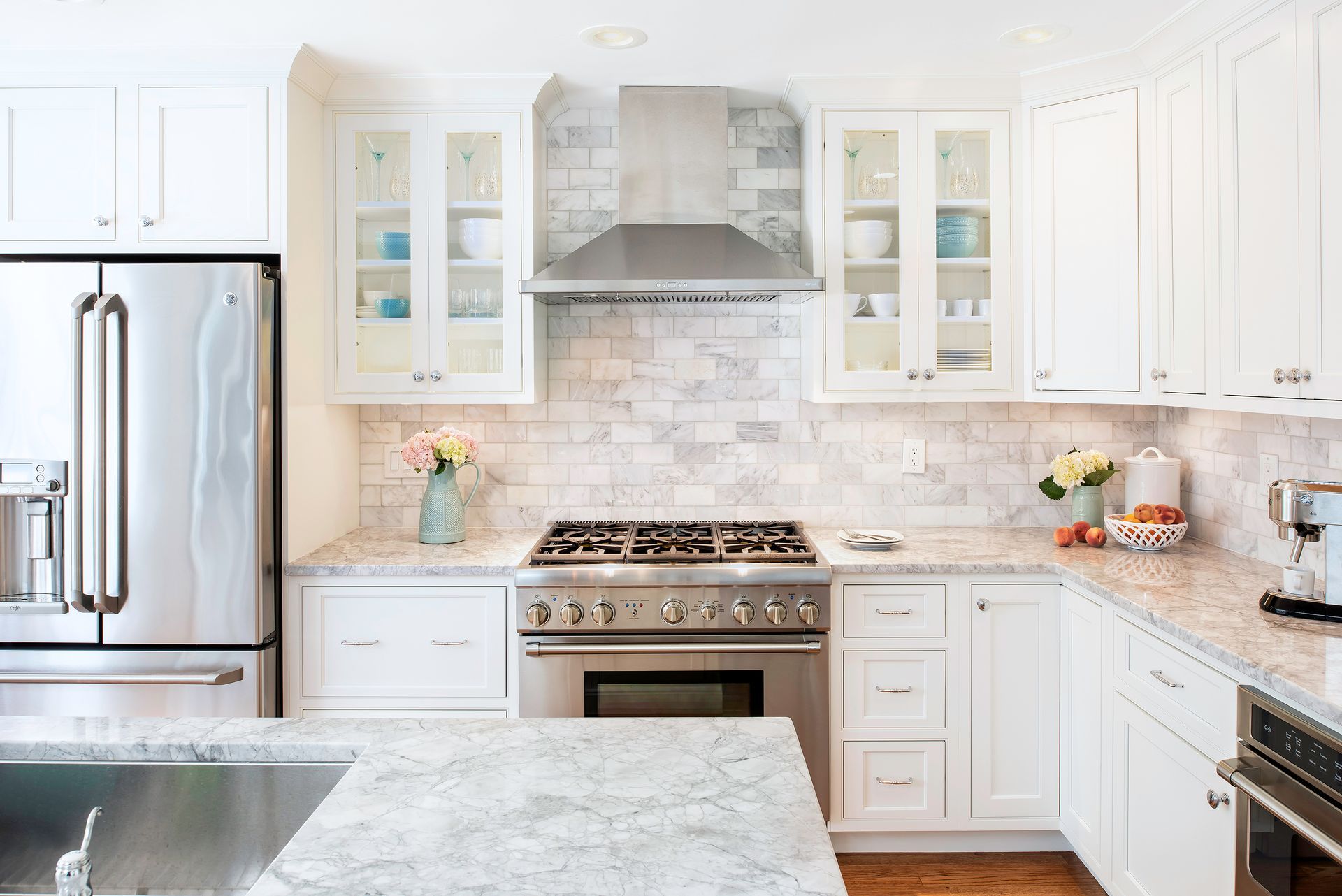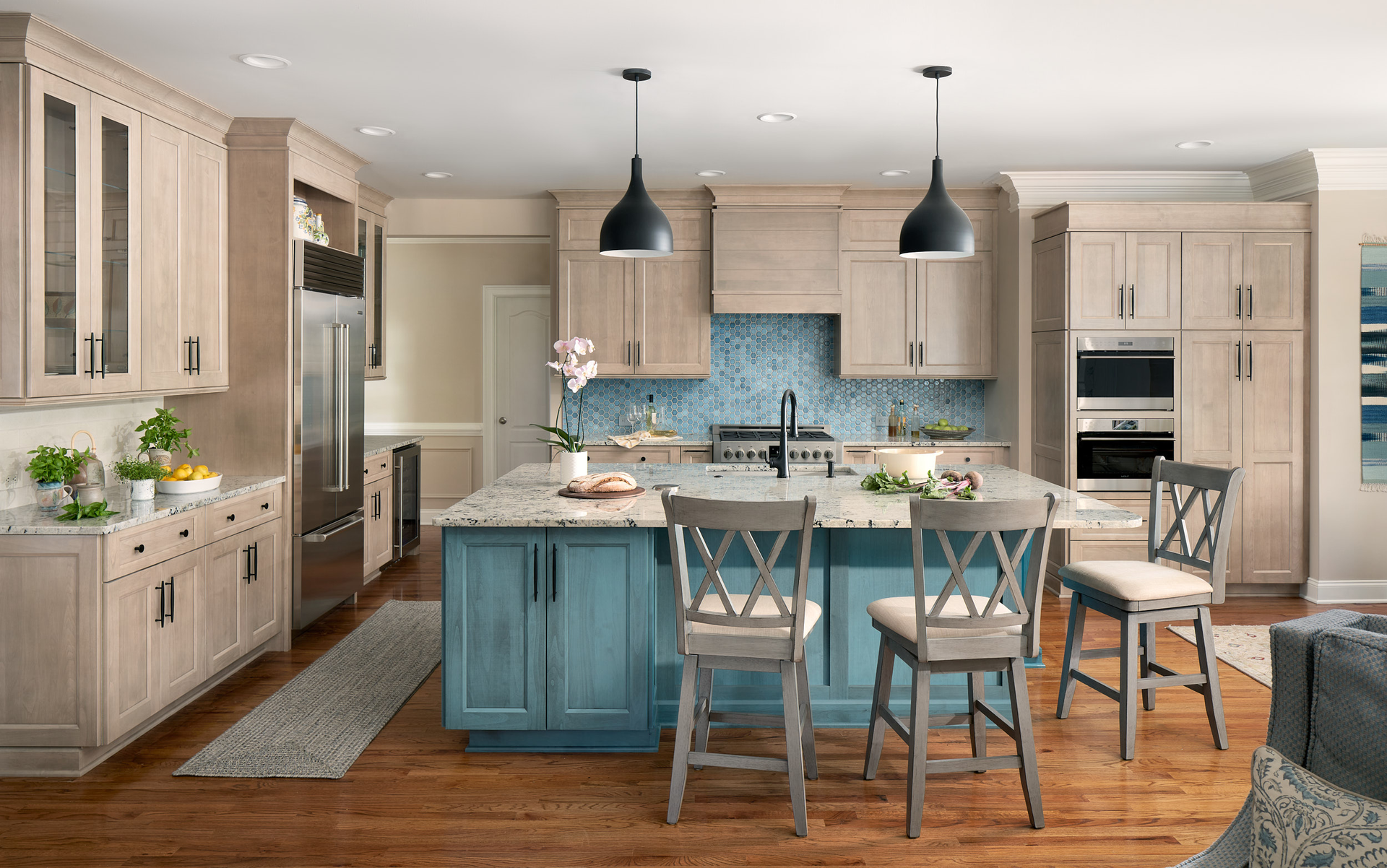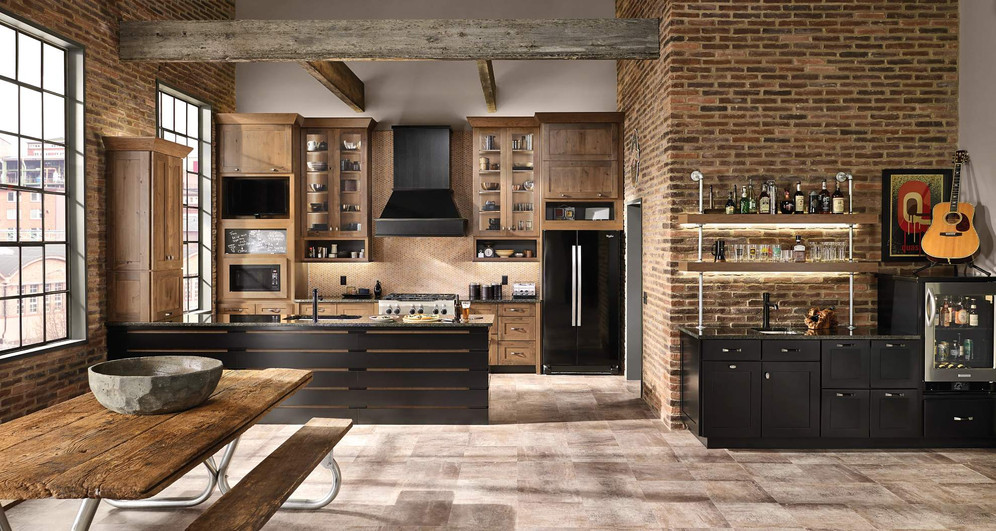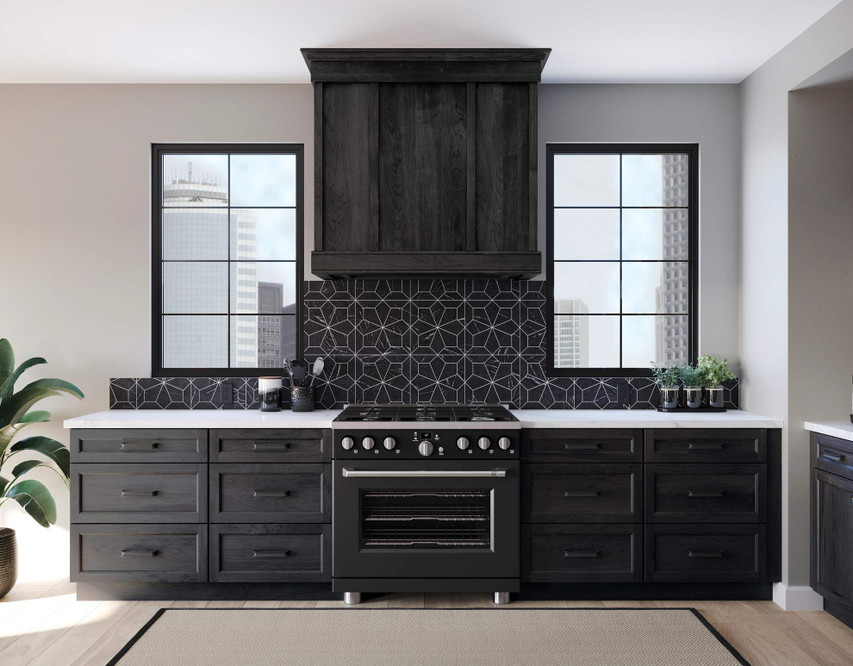Pros and Cons of Integrated Sinks in Kitchen Countertops
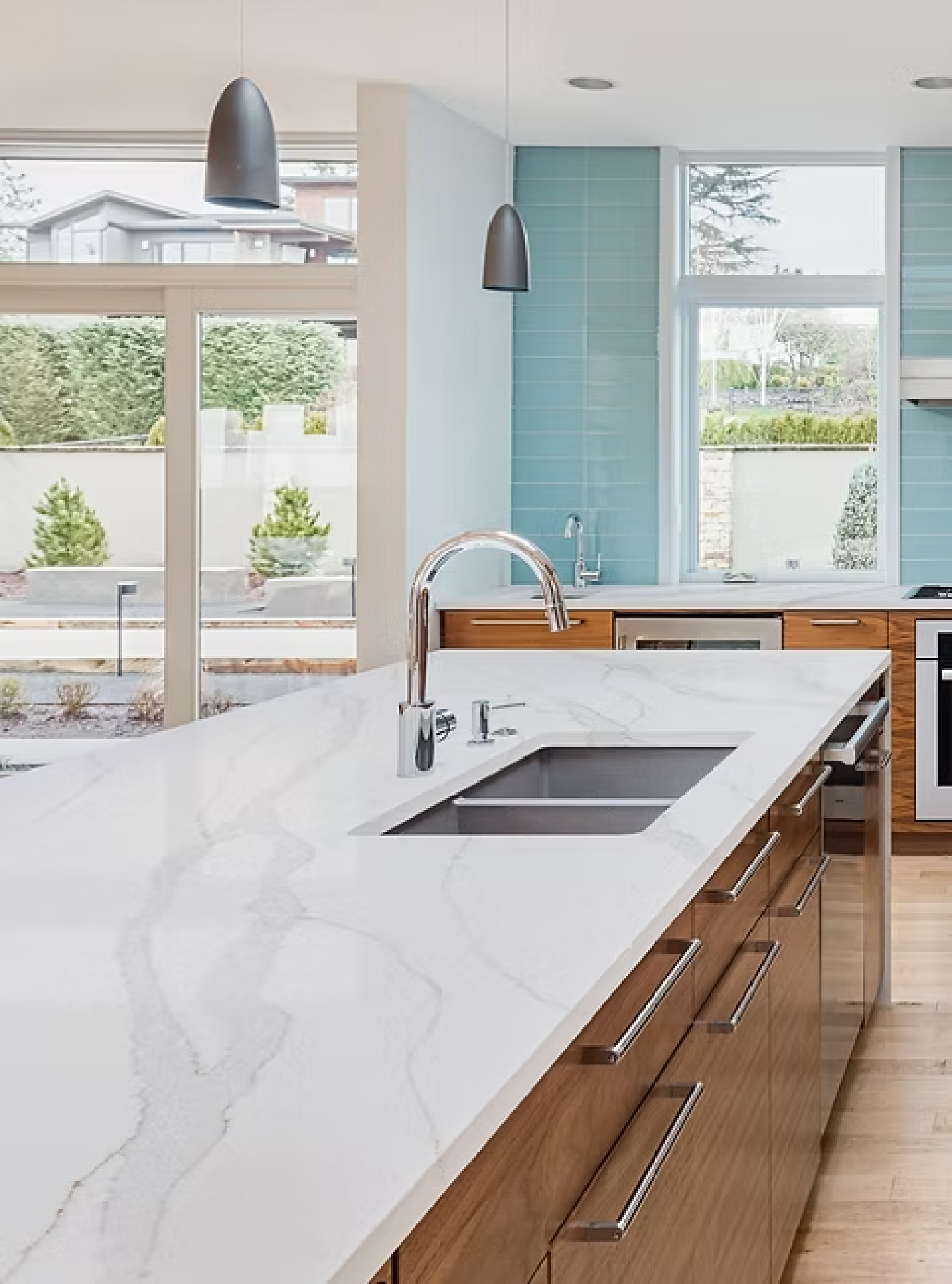
Integrated kitchen sinks are becoming an increasingly popular feature in modern kitchen design. These sinks are crafted from the same material as the countertop, creating a seamless, unified surface that enhances both form and function. Whether you're planning a full remodel or simply exploring new countertop options, it’s important to understand the benefits and potential limitations of integrated sinks before making a decision.
At Freedom Cabinets, we help homeowners in Akron and Cleveland navigate every aspect of their kitchen projects, including the selection of sinks that match their aesthetic, cooking habits, and maintenance preferences. In this blog, we break down the pros and cons of integrated kitchen sinks, helping you decide if this innovative feature fits your lifestyle and kitchen goals.
What Is an Integrated Kitchen Sink?
An integrated sink is formed from the same material as the surrounding countertop whether quartz, solid surface, or porcelain. Instead of being a separate unit dropped into or mounted under the countertop, the sink is molded or fabricated as one continuous piece. The result is a sleek, modern design that offers both aesthetic and practical advantages.
This type of sink design is most commonly paired with quartz countertops, solid surface materials, or porcelain slabs, all of which can be molded or shaped to include sink basins without visible seams..
Pros of Integrated Kitchen Sinks
1. Seamless Appearance
Integrated sinks offer a smooth, uninterrupted surface between the sink and countertop. This gives kitchens a clean, minimalist look that fits perfectly with modern or transitional styles.
2. Easy to Clean
With no seams or crevices between the sink and the countertop, there's nowhere for crumbs, grime, or water to collect. Homeowners love the ease of wiping debris directly into the sink without obstruction.
3. Modern, High-End Aesthetic
Integrated sinks offer a polished and refined look that elevates the entire space. They're ideal for homeowners looking to add a custom, designer feel to their kitchens.
4. Material Continuity
Using the same material for both the countertop and sink creates a cohesive visual flow. This is particularly effective in open-concept kitchens where style continuity matters.
5. Customizable Size and Shape
Since integrated sinks are fabricated along with the countertop, homeowners can choose the depth, shape, and bowl configuration that best fits their kitchen habits.
Cons of Integrated Kitchen Sinks
1. Higher Upfront Cost
Integrated sinks can be more expensive to fabricate and install than traditional drop-in or undermount sinks. The cost depends on the material and the customization involved.
2. Repair and Replacement Challenges
If the sink gets damaged or stained, it’s often not possible to replace just the sink. Repairs may require refinishing the entire countertop or in some cases, replacing the whole unit.
3. Limited Material Options
Integrated sinks are typically only available with materials like quartz, solid surface, or porcelain. Homeowners using natural stone like granite or marble will need to opt for separate sink installations.
4. Lead Time and Fabrication Time
Custom integrated sinks require longer fabrication times. Homeowners working with tight remodeling schedules may find this an obstacle.
5. Fewer Design Variations
While the design is sleek, the range of finishes and colors may be more limited compared to mix-and-match options with traditional sinks and countertop pairings.
Integrated Sink Materials: A Quick Comparison
Here’s a comparison of common materials used for integrated sinks:
| Material | Durability | Maintenance | Visual Appeal | Cost |
|---|---|---|---|---|
| Quartz | High | Low | High | Moderate–High |
| Solid Surface | Moderate | Low | Moderate | Moderate |
| Porcelain Slab | High | Low | High | High |
These materials work well for integrated sinks because they can be fabricated into smooth, seamless forms. However, each comes with its own durability profile and pricing.
When Is an Integrated Sink the Right Choice?
Integrated kitchen sinks are ideal for:
- Homeowners seeking a modern, streamlined aesthetic
- Households looking for easy-to-clean surfaces
- Kitchens where continuity and minimalism are priorities
They’re especially popular in high-end remodels, chef-style kitchens, and new construction homes where design customization is part of the plan.
However, they may not be the best choice if:
- You want more flexibility to switch out the sink later
- You're working within a tight budget or schedule
- You're using a natural stone countertop
Frequently Asked Questions (FAQs)
Are integrated sinks more expensive?
Yes, integrated sinks typically cost more upfront due to fabrication and material costs.
Can I install an integrated sink in granite?
No. Granite and other natural stones are not well-suited for integrated sink fabrication.
Do integrated sinks come in different styles?
Yes, but style options may be more limited than standard drop-in or undermount sinks.
Are integrated sinks harder to repair?
Repairs can be more complicated and may involve refinishing the countertop.
Is an integrated sink easy to keep clean?
Absolutely. The lack of seams makes cleaning simple and sanitary.
Work With Freedom Cabinets to Select the Right Countertop and Sink Combo
At Freedom Cabinets, we help homeowners select the best countertop and sink solutions for their kitchens whether you're drawn to the seamless look of integrated sinks or prefer the flexibility of undermount options. We’ll walk you through materials, finishes, and functionality to ensure your final design is beautiful and practical.
Visit our North Royalton or Hudson showroom to explore countertop materials that support integrated sinks, including quartz and solid surfaces. Our team will answer your questions, show real-life displays, and help you plan a kitchen that works for how you live.

